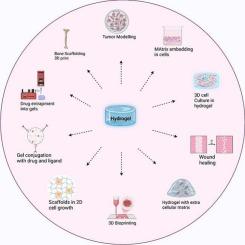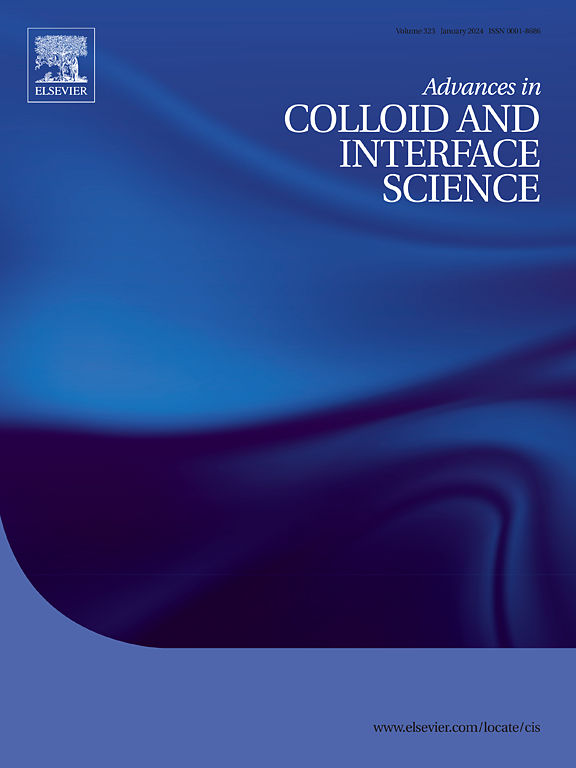Tissue engineering: Hydrogel scaffolds and mechanical properties as key design parameters
IF 19.3
1区 化学
Q1 CHEMISTRY, PHYSICAL
引用次数: 0
Abstract
The global demand for effective tissue regeneration strategies continues to rise due to the increasing burden of trauma, chronic diseases, and age-related tissue degeneration. Hydrogels are widely explored as promising biomaterials for tissue engineering due to their high water content, swelling capacity, ability to absorb liquid exudates, flexible structure, and structural resemblance to the extracellular matrix. Under appropriate design and formulation, many hydrogels also demonstrate favorable levels of biocompatibility; however, this property can vary depending on the composition, crosslinking chemistry, and degradation products of the hydrogel. Among the key design parameters, the mechanical properties of hydrogels are critical determinants of their success in tissue engineering, as they directly govern cell–matrix interactions through mechanotransduction. The stiffness and viscoelasticity of the scaffold influence cell adhesion, migration, proliferation, and lineage commitment, while adequate compressive strength and shear resistance are required to preserve structural integrity under physiological loads. Precise tuning of these parameters is essential to reproduce the biomechanical milieu of native tissues and to achieve functional regeneration. Hydrogels are diverse in origin and chemistry, ranging from natural polymers to synthetic and charged networks, each offering unique advantages and limitations. Their versatility has enabled the development of application-specific scaffolds for skin, bone, cartilage, neural, and cardiac tissue regeneration. However, challenges remain in achieving mechanical robustness, long-term stability, and functional integration in vivo. Advances in material science and crosslinking technologies continue to drive the evolution of hydrogel systems with improved mechanical performance and biological response. This review presents a comprehensive scientific perspective on the significance of mechanical properties in hydrogel-based scaffolds and their relevance to tissue-specific applications, offering insights into future directions in regenerative medicine.

组织工程:水凝胶支架和力学性能作为关键设计参数。
由于创伤、慢性疾病和与年龄相关的组织变性负担的增加,全球对有效组织再生策略的需求持续上升。水凝胶由于其高含水量、膨胀能力、吸收液体渗出物的能力、灵活的结构以及与细胞外基质的结构相似性而被广泛探索为有前途的组织工程生物材料。在适当的设计和配方下,许多水凝胶也表现出良好的生物相容性;然而,这种性质可以根据水凝胶的组成、交联化学和降解产物而变化。在关键的设计参数中,水凝胶的机械性能是其在组织工程中成功的关键决定因素,因为它们通过机械转导直接控制细胞-基质的相互作用。支架的刚度和粘弹性影响细胞粘附、迁移、增殖和谱系承诺,同时需要足够的抗压强度和抗剪切能力来保持生理载荷下的结构完整性。这些参数的精确调整对于再现原生组织的生物力学环境和实现功能再生至关重要。水凝胶的来源和化学成分多种多样,从天然聚合物到合成和带电网络,每种都有其独特的优点和局限性。它们的多功能性使得开发用于皮肤、骨骼、软骨、神经和心脏组织再生的专用支架成为可能。然而,在实现机械稳健性、长期稳定性和体内功能整合方面仍然存在挑战。材料科学和交联技术的进步不断推动水凝胶体系的发展,提高了其机械性能和生物反应。本文综述了水凝胶支架力学性能的科学意义及其与组织特异性应用的相关性,为再生医学的未来发展方向提供了见解。
本文章由计算机程序翻译,如有差异,请以英文原文为准。
求助全文
约1分钟内获得全文
求助全文
来源期刊
CiteScore
28.50
自引率
2.60%
发文量
175
审稿时长
31 days
期刊介绍:
"Advances in Colloid and Interface Science" is an international journal that focuses on experimental and theoretical developments in interfacial and colloidal phenomena. The journal covers a wide range of disciplines including biology, chemistry, physics, and technology.
The journal accepts review articles on any topic within the scope of colloid and interface science. These articles should provide an in-depth analysis of the subject matter, offering a critical review of the current state of the field. The author's informed opinion on the topic should also be included. The manuscript should compare and contrast ideas found in the reviewed literature and address the limitations of these ideas.
Typically, the articles published in this journal are written by recognized experts in the field.

 求助内容:
求助内容: 应助结果提醒方式:
应助结果提醒方式:


